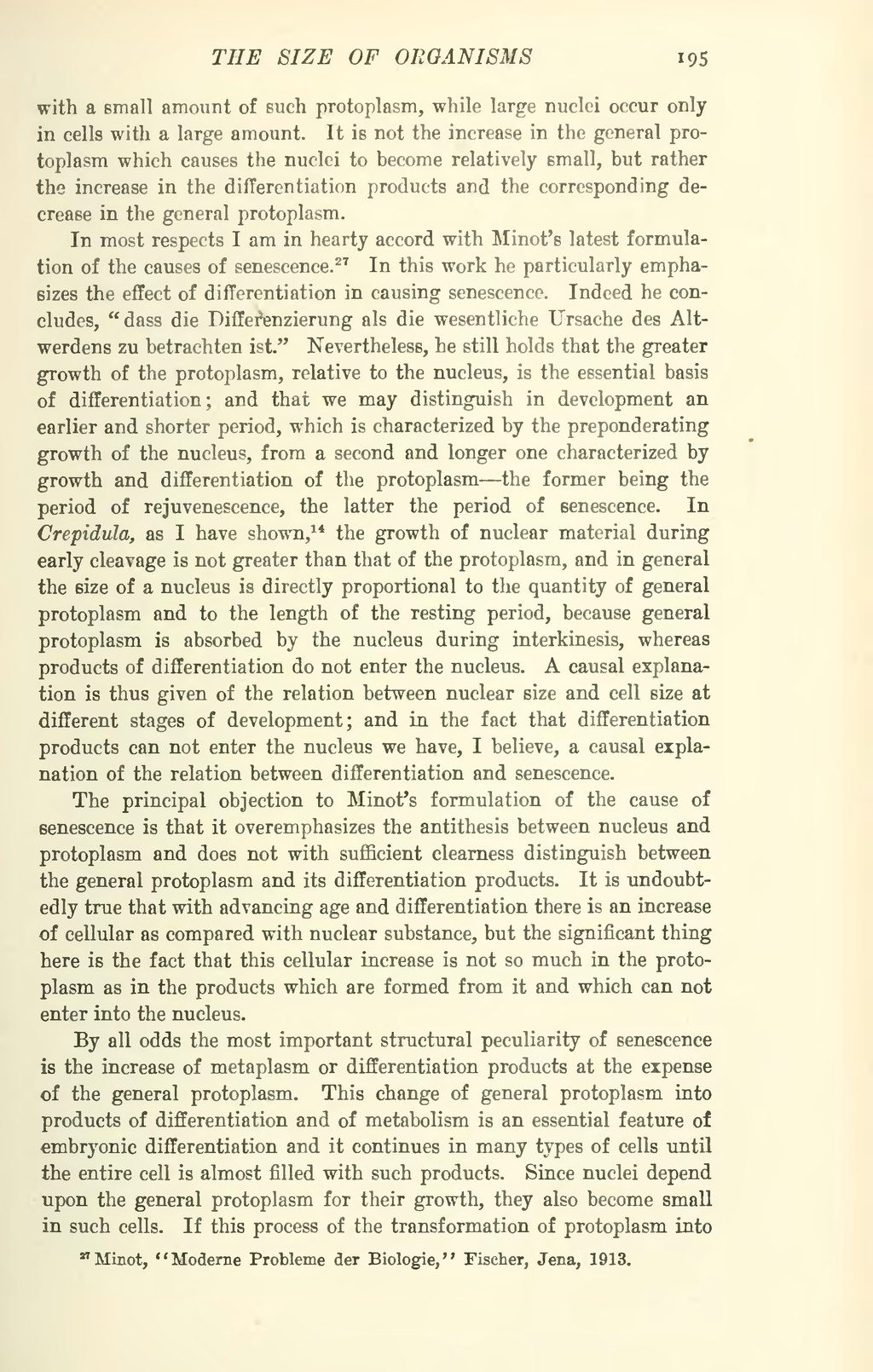Replicated Ref# 14 (Conklin, "Cell Size and Nuclear Size," Jour. Exp. Zool., 12, 1912.) and Ref# 27 (Minot, "Moderne Probleme der Biologie," Fischer, Jena, 1913.) (Wikisource contributor note)
with a small amount of such protoplasm, while large nuclei occur only in cells with a large amount. It is not the increase in the general protoplasm which causes the nuclei to become relatively small, but rather the increase in the differentiation products and the corresponding decrease in the general protoplasm.
In most respects I am in hearty accord with Minot's latest formulation of the causes of senescence.[1] In this work he particularly emphasizes the effect of differentiation in causing senescence. Indeed he concludes, "dass die Differenzierung als die wesentliche Ursache des Altwerdens zu betrachten ist." Nevertheless, he still holds that the greater growth of the protoplasm, relative to the nucleus, is the essential basis of differentiation; and that we may distinguish in development an earlier and shorter period, which is characterized by the preponderating growth of the nucleus, from a second and longer one characterized by growth and differentiation of the protoplasm—the former being the period of rejuvenescence, the latter the period of senescence. In Crepidula, as I have shown,[2] the growth of nuclear material during early cleavage is not greater than that of the protoplasm, and in general the size of a nucleus is directly proportional to the quantity of general protoplasm and to the length of the resting period, because general protoplasm is absorbed by the nucleus during interkinesis, whereas products of differentiation do not enter the nucleus. A causal explanation is thus given of the relation between nuclear size and cell size at different stages of development; and in the fact that differentiation products can not enter the nucleus we have, I believe, a causal explanation of the relation between differentiation and senescence.
The principal objection to Minot's formulation of the cause of senescence is that it overemphasizes the antithesis between nucleus and protoplasm and does not with sufficient clearness distinguish between the general protoplasm and its differentiation products. It is undoubtedly true that with advancing age and differentiation there is an increase of cellular as compared with nuclear substance, but the significant thing here is the fact that this cellular increase is not so much in the protoplasm as in the products which are formed from it and which can not enter into the nucleus.
By all odds the most important structural peculiarity of senescence is the increase of metaplasm or differentiation products at the expense of the general protoplasm. This change of general protoplasm into products of differentiation and of metabolism is an essential feature of embryonic differentiation and it continues in many types of cells until the entire cell is almost filled with such products. Since nuclei depend upon the general protoplasm for their growth, they also become small in such cells. If this process of the transformation of protoplasm into
